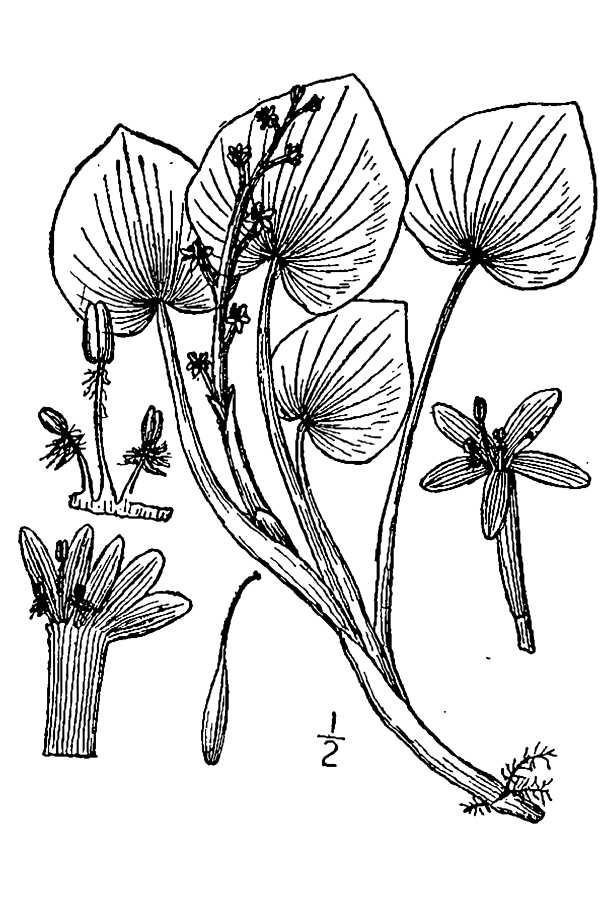Heteranthera
|
Family: Pontederiaceae |
In the flora area, Heteranthera peduncularis Bentham is known only from one collection in Arizona (C. Mohr s.n., US), probably from about 1900. The center of the distribution of this species is in the highlands of Mexico. It is closely related to Heteranthera multiflora and H. reniformis, and may be distinguished by distinctly cordate leaves, mauve perianth limb lobes, and glabrous filaments.
PLANTS: Annual or perennial herbs. STEM: glabrous, submersed and growing to surface or emersed and procumbent, branching. SESSILE LEAVES: forming a basal rosette or alternate, simple, glabrous, acuminate to acute at apex; petiolate leaves floating or emersed, simple, reniform, cordate or oblong, thin, glabrous, obtuse to acuminate at apex, the floating leaves longer and narrower than emersed leaves. INFLORESCENCE: a spike or flower solitary; peduncle elongating in one to several days, individual flowers open one day only. PERIANTH: salverform, yellow, mauve, blue, or white, the lobes narrowly elliptic to linear, glandular pubescent to glabrous, obtuse to acuminate at apex; stamens 3, fused to the perianth at adjacent lobes; filaments yellow or purple, centrally inflated or linear, glandular pubescent, hairy toward apex or glabrous; anthers widely ovate to lanceolate, yellow, purple or white; ovary incompletely 3-locular; ovules few to many. FRUIT: an elongate capsule with longitudinal dehiscence. SEEDS: few to many, the testa with longitudinal wings and cross striae between wings. NOTES: 12 spp.; New World and Africa. (Greek: Hetero = different + anthera = anther). Horn, C. N. 1985. A systematic revision of the genus Heteranthera (senu lato). Ph.D. dissertation, University of Alabama. 260 pp.; Horn, C. N. 1988. Aquat. Bot. 31: 197-209. REFERENCES: Horn, Charles N. 1998 Pontederiaceae. J. Ariz. - Nev. Acad. Sci. 30(2): 133. Fls 1-several in a sessile or peduncled infl subtended by a sheathing bladeless spathe, below which is another blade-bearing lf; fls regular or with the perianth-segments unequally disposed; perianth-tube very slender, with 6 spreading, linear to lanceolate segments, the 3 outer narrower than the 3 inner; stamens 3, dimorphic, the 2 posterior (lower) ones short, with usually ovate anthers, the anterior (upper) one larger, with longer filament and oblong to sagittate anther; anthers not coiling after dehiscence; ovary incompletely 3-locular, the 3 parietal placentas intruded, with many ovules; nectaries wanting; fr capsular; plants submersed to partly emersed, or creeping in mud; lvs and stems dimorphic, the erect fertile stems differentiated from the very short to elongate, branched and creeping sterile ones; some lvs bladeless, narrow, sessile and often forming a rosette, others petiolate, with expanded, floating or emersed blade; fls small, white to blue or violet. 11, warm Amer. and Afr. Gleason, Henry A. & Cronquist, Arthur J. 1991. Manual of vascular plants of northeastern United States and adjacent Canada. lxxv + 910 pp. ©The New York Botanical Garden. All rights reserved. Used by permission. |

